'Faraway' play review: Super simple, just line up and turn over the cards, but tactics and strategy greatly affect the outcome

The Japanese version of the board game ' Faraway ,' which won the Grand Prize in the intermediate game category of the French Game of the Year Award at the Cannes International Game Festival, was released on June 27, 2024. The rules are simple but the game is highly strategic, so three GIGAZINE editorial staff actually played it.
Faraway Japanese version (orange: normal color) - Engames Shop
·table of contents
◆Contents
◆ Preparation for play
◆Game winning and losing conditions
◆ Try playing the game
◆Scoring
Summary
◆Contents
The Faraway package looks like this:
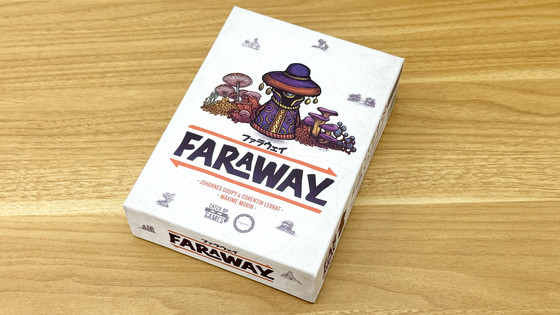
The game is designed for 2-6 players, ages 10 and up, and a play time of 25 minutes.
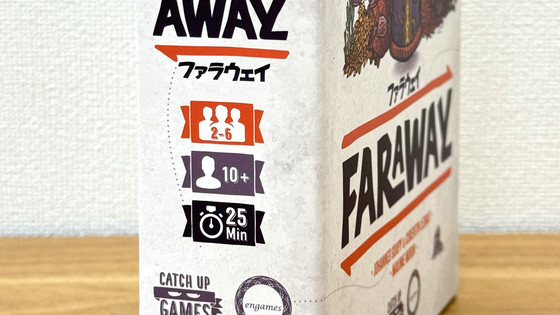
On the side of the inner box were photos and messages of the staff involved with Faraway.
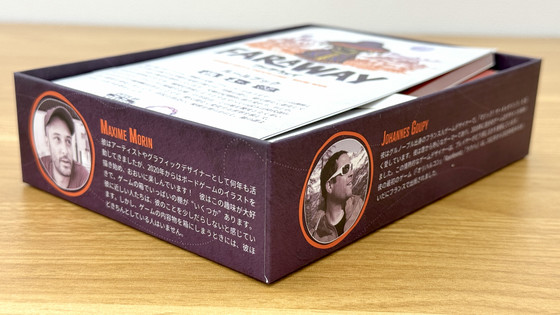
The contents include a rules manual, a quick reference guide for score calculations, 45 sacred site cards, 68 region cards, and one score recording sheet.
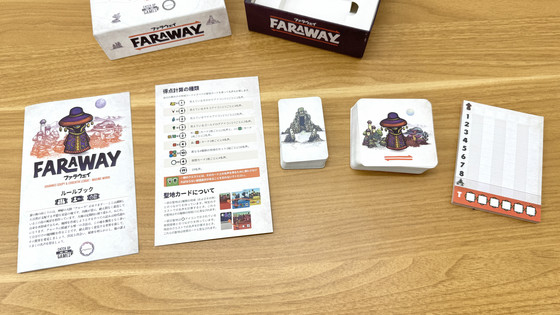
◆ Preparation for play
First, shuffle the region cards and deal each player three cards.
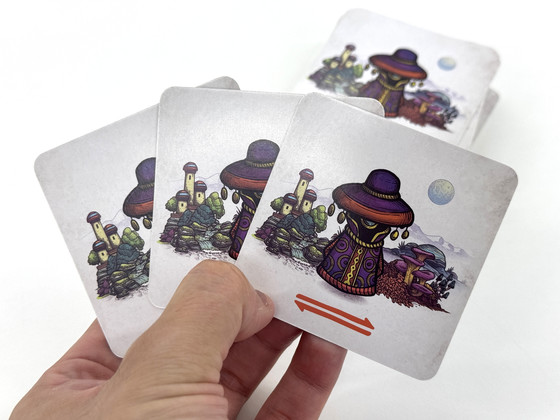
Place the remaining region cards in the center as a deck, and turn over one card for each player. Since we are playing with three people, we turned over four cards and lined them up.
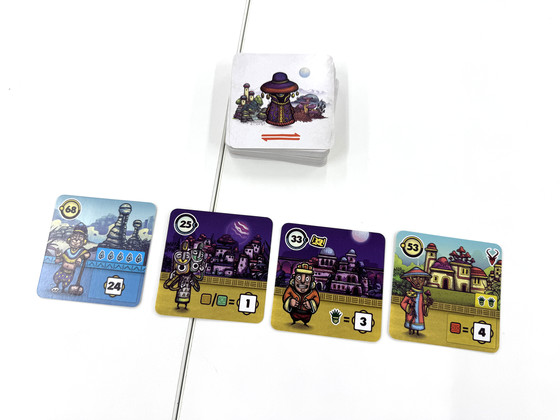
Next, shuffle the Sacred Site cards and place them next to the Region cards. You're ready to go.
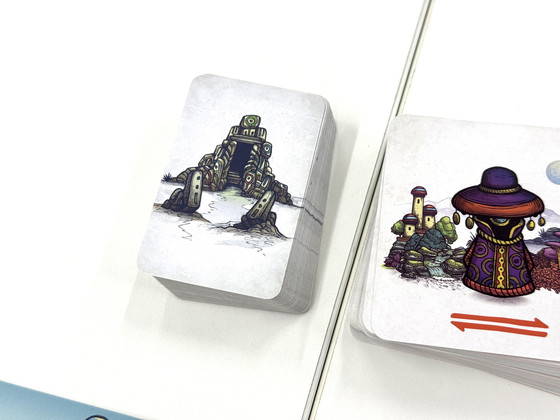
◆Game winning and losing conditions
In 'Faraway,' each round consists of three phases: 'exploring the area,' 'discovering a sacred place,' and 'ending the exploration.' The game ends after eight rounds. Players collect the points written on the area cards they have lined up, and the player who has the most points at the end wins.
Region cards have a number in the upper left corner and a score condition in the lower right corner. For example, the following card has the effect of '3 points for each night card,' but the conditions for activating the effect are written above it. Sacred site cards and region cards have resource icons of Goldlog (plants), Okiko (animals), and Udu (minerals) written on them, and the effect will not be activated unless the type and number of icons are met.
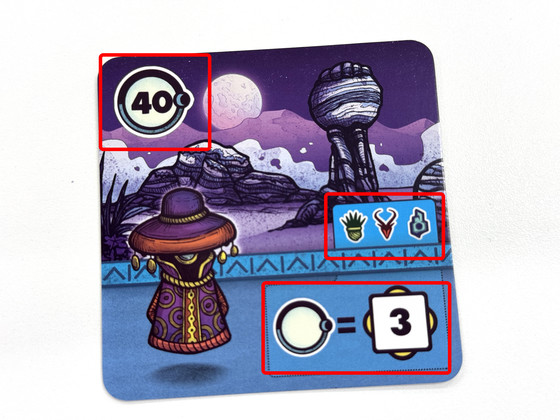
In the game, you play up to eight region cards from your hand, and then arrange them in order. We'll go
◆ Try playing the game
In 'Regional Exploration,' you place one of your three cards face down.
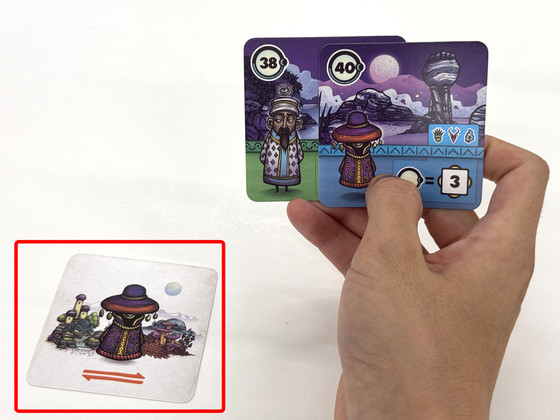
After everyone has played one card, they all turn over the face-down cards at the same time. At this point, you should pay attention to the number in the top left corner.
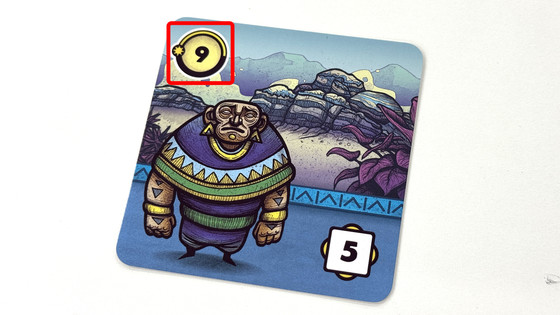
Next is the 'Discovery of the Holy Land' phase, which is omitted in the first round. In the 'End of Exploration' phase that follows, the player with the smallest number in the upper left corner of the card they played must choose one region card from the field and replenish their hand. After everyone has drawn a region card, they remove the remaining region cards from the field, draw four cards from the deck and place them on the field, ending the first round.

During the 'Explore the Area' phase of the second round, place a card chosen from your hand face down to the right of the card you played in the first round.
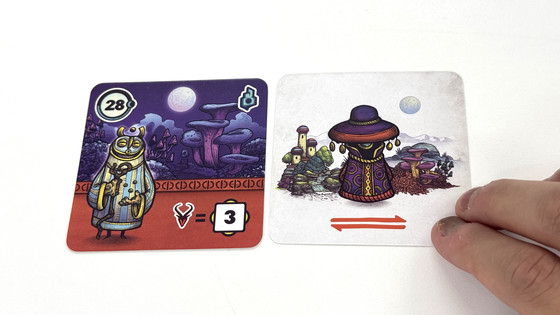
Then, when everyone has played one card from their hand, all the face-down cards are turned over at the same time. At this time, the player who played a number higher than the card played in the previous round will proceed with the 'Discovery of the Holy Land' phase that follows. For example, in the following case, the number played in the first round was '28', and in the second round it was the larger number '33', so the player can proceed with the 'Discovery of the Holy Land' phase.
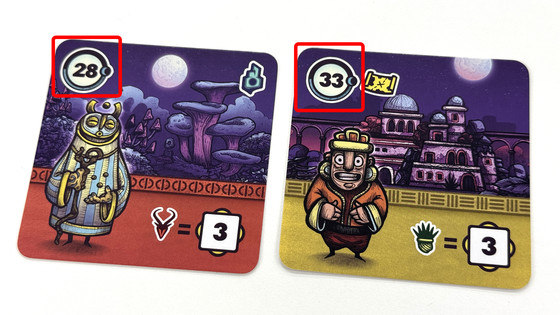
During the 'Discovery of Holy Sites' phase, you can draw a Holy Site card. Normally, you can only draw one, but if the card you have in play has a map icon, you can draw an additional number of cards equal to the number of map icons.
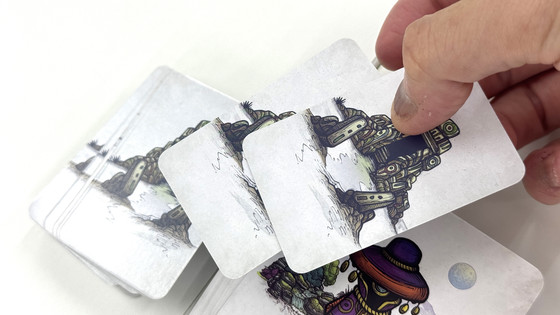
If you draw a Holy Site, you move on to the 'End of Exploration' phase. After refilling your hand, if you draw a Holy Site card in the 'Discover Holy Site' phase, place it on top of the area cards you have lined up. If you get multiple Holy Site cards, choose and place only one, and return the rest to your deck.
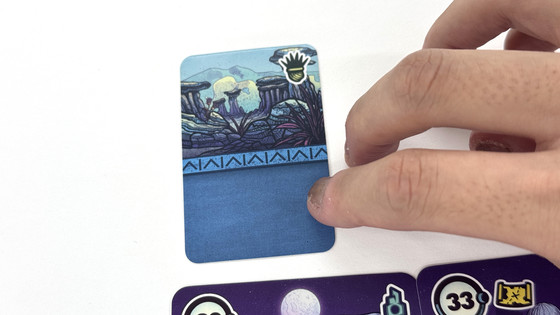
After that, you repeat the process of 'exploring the area,' 'discovering a sacred site,' and 'ending the exploration,' and continue to line up area cards.

Once all eight region cards have been laid out, the game ends for that round.
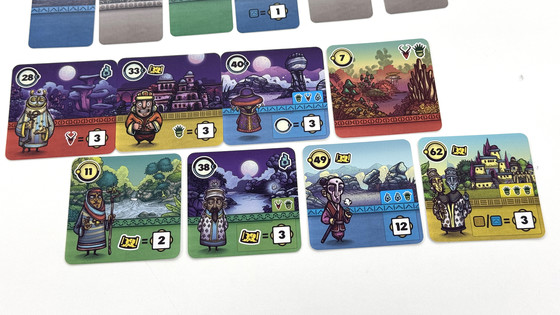
◆Scoring
To calculate the points, first turn over all eight region cards.
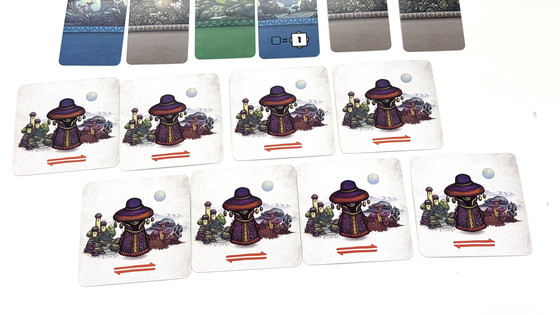
Then, turn over the last card you lined up and calculate the score conditions written on each card. For example, the following card allows you to get 3 points for each yellow or blue card. However, in order to activate it, you need to have 3 gold logs displayed.
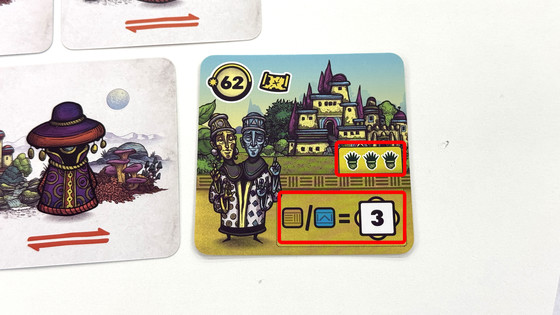
At this point, the face-up cards look like this. There were two Gold Log icons on the Holy Land card, but there was one more, so the score for this card was invalid. In other words, it was worth 0 points.
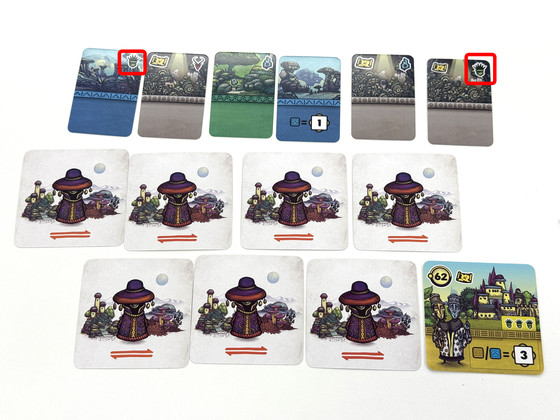
The next card, the seventh card, said that if you had two wudu and one gold log, you could get 12 points.
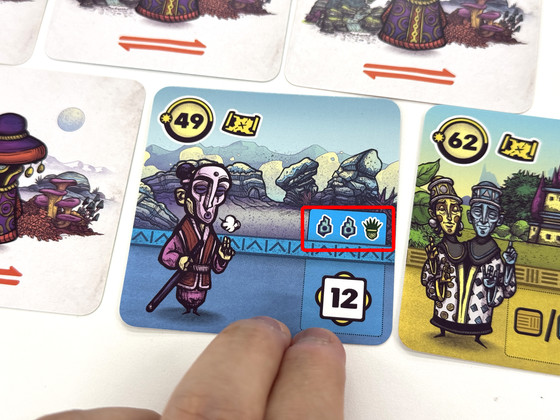
When I looked at the Holy Land card, I saw that it had two Wudu and one Gold Log. I met the conditions to get points, so I got 12 points.
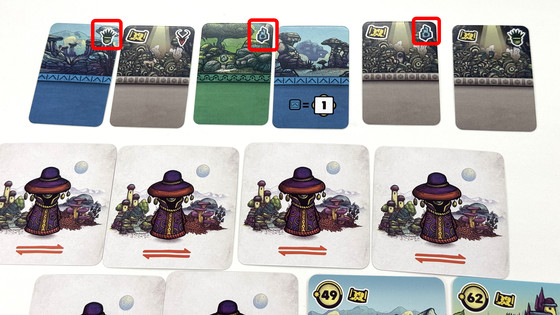
As you turn the cards over in order like this, you calculate your score each time. This time, I placed cards on the 5th and 6th cards that allow you to get points according to the number of map icons, and since I had collected a lot of map icons at the same time, I was able to increase my score.
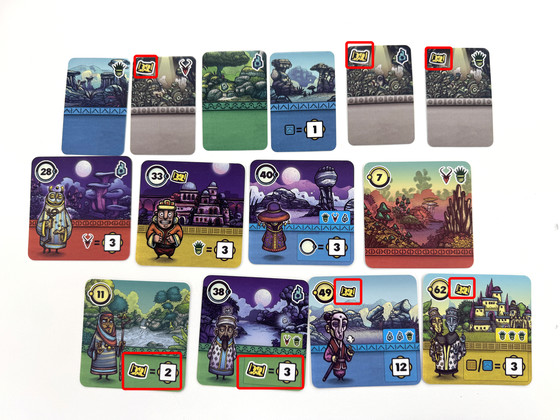
The final score is calculated by adding up the points of the eight cards and then adding the point of the Holy Site card.

The winning player placed the cards like this. The strategy was to place cards with Wudu as a point source on the first and second cards, followed by cards with the Wudu icon on them. This resulted in a development where ' after the Wudu icon was turned over and displayed, I got a lot of points from Wudu .' It was a perfect strategy based on reading the order of turns.
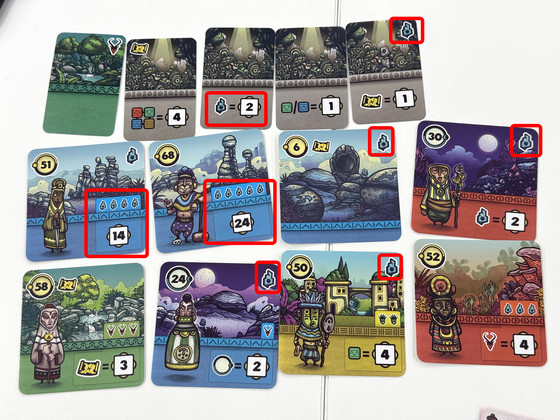
One player who had devised a strategy of 'getting lots of sacred land cards by continuing to get large numbers from small numbers' aimed to score points with the sacred land cards, but since regional cards with small numbers tend to have less scoring power, it seems that their score did not improve significantly.
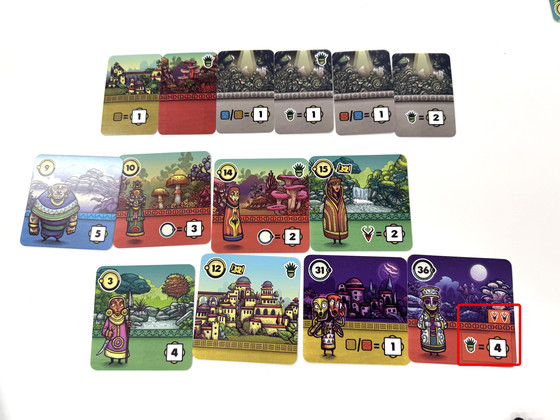
Summary
When I actually played 'Faraway', I found that the rules were extremely simple and easy to understand even for people who are not familiar with board games, but the scoring system was somewhat complicated and highly strategic, making it a deep game. It took about 30 minutes for three people to play one game, and once you get used to it, you can progress quickly, and there is a trade-off based on the numbers written on the cards, making it a game you will want to play again and again. However, since you need to line up the cards on the table, you will need some space to play.
Faraway can be purchased from Amazon.co.jp for 3,300 yen including tax.
Amazon | Faraway Japanese version [Engames][Engames][Board games][Faraway] | Board games | Toys
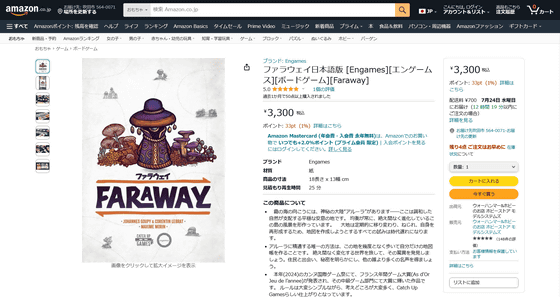
Related Posts:







